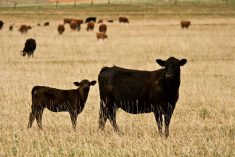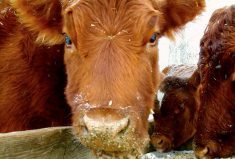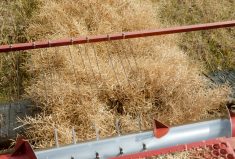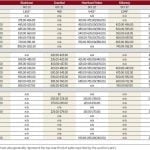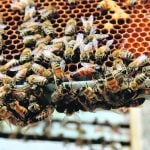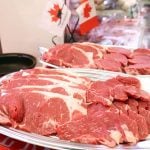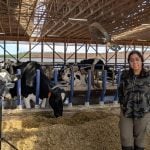Compared to last week, western Canadian yearling prices traded $2-$4 higher while calves and lighter-weight feeders were relatively unchanged. Alberta packers were buying fed cattle on a dressed basis from $270 to $272, up $5-$7 from week-ago levels. This firmer tone in the fed market quickly spilled over into prices for shorter-term replacements. There is a feeling of deja vu among feedlot operators because last year, the feeder market experienced a seasonal bounce of $10-$15 in the first half of May. Pen conditions are slowly improving. The risk discount for higher deathloss appears to be eroding. Orders from Feedlot Alley in southern Alberta stretched into all areas of Western Canada, setting the price structure.
Read Also

China to buy 12 million metric tons of soybeans this season, Bessent says
U.S. Treasury Secretary Scott Bessent said on Thursday that China has agreed to buy 12 million metric tons of American soybeans during the current season through January and has committed to buying 25 million tons annually for the next three years as part of a larger trade agreement with Beijing.
Large-frame tan steers with medium to harder flesh levels averaging just under 900 lbs. were quoted at $168 landed in southern Alberta; similar-quality heifers weighing 800 to 825 lbs. were quoted at $173 in the same region. A smaller group of 825-lb. Charolais-blended steers with medium to heavier flesh were quoted at $176 in central Alberta. There were discounts for the heavier yearlings over 950 lbs. with heavier flesh levels. Some of these cattle have stayed in the backgrounding lot too long.
Feedlots were also aggressive in the lighter weight categories, outbidding those latecomers shopping for grassers. Mixed steers averaging 500 lbs. were trading in the range of $229-$235 in central Alberta; about a $5 premium over Saskatchewan and Manitoba values. Mixed heifers averaging 550 lbs. were trading around $186-$188 in Alberta, also a slight premium over the eastern Prairie regions.
U.S. feeder cattle markets were also $3-$5 higher with some areas jumping as much as $5 to $8 above week-ago levels. The U.S. Department of Agriculture reported that March feedlot placements were down nine per cent from year-ago levels. Drought in the U.S. southern Plains caused feeder cattle to be placed sooner than normal and U.S. feeder supplies are now below year-ago levels. Canadian year-to-date exports of feeder cattle to the U.S. are running 36 per cent above year-ago levels. U.S. buyers will continue to be aggressive on the shorter-term replacements.
— Jerry Klassen manages the Canadian office of Swiss-based grain trader GAP SA Grains and Produits Ltd. and is president and founder of Resilient Capital, specializing in proprietary commodity futures trading and market analysis. Jerry consults with feedlots on risk management and writes a weekly cattle market commentary. He can be reached at 204-504-8339.






